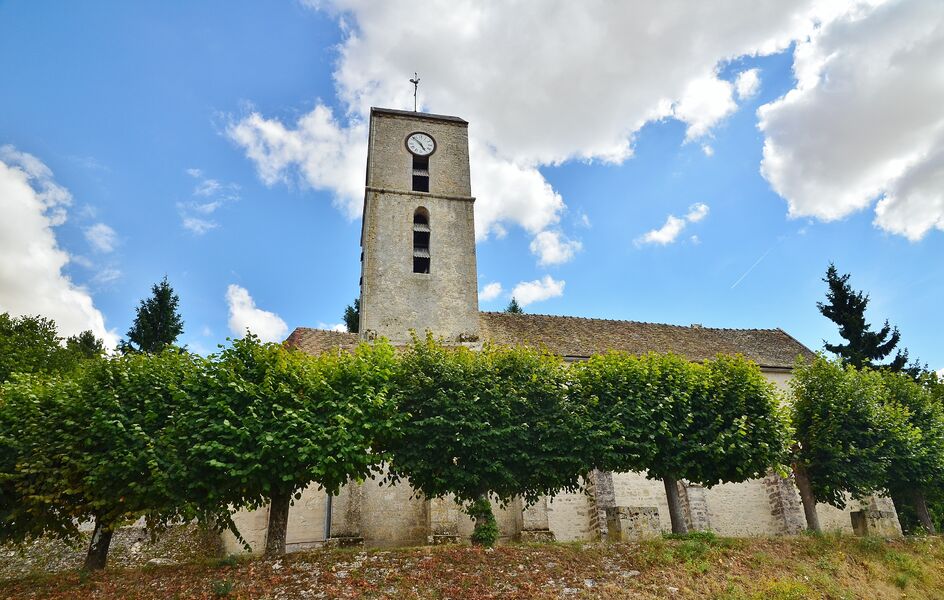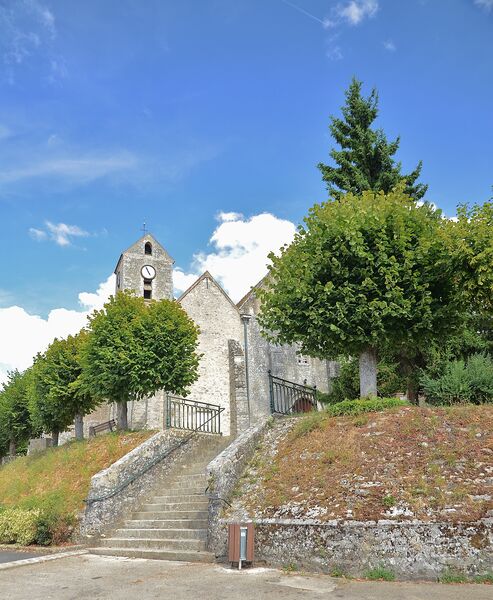Eglise Saint-Léger
Buno-Bonnevaux
Patrimoine culturel
The church of Buno-Bonnevaux was built from the 12th century and then greatly restored during the 15th century after the Hundred Years War.
Coordonnées
place Jean-Marie Ferry91720 Buno-Bonnevaux
06 88 57 62 12
01.64.98.80.57
The church is located on a little hill dominating the village’s place where the cemetery was once located. It is hard to identify when exactly the church was built but the apses and part of the bell tower are from the 12th century. A lot of work was done during the 15th century, especially concerning arches, windows and frame, this one was again restored later. The most possible hypothesis about this long restoration is that the church could have been damaged during the Hundred Years War. In 1794, the estate of Bonnevaux was attached to the village of Buno, so the church became parochial for the reunited village.
Its style is quite original. The building is made of different materials : sandstone, limestone and bricks. The North side of the nave is attached to a roof with its aisle, this same aisle is surmounted by a double-sloped roof. It gives kind of a double nave to the church. The church is dominated by a two level bell tower that was restored at the end of the 19th century and the beginning of the 20th century. The sacristy is newer than the rest of the building. The church also has a chapel dedicated to Virgin Mary which was decorated at the end of the 19th century. The altar and the choir were also decorated at this same period. A hexagonal stoup from the old chapel dedicated to Saint-Antoine coming from Buno Castrum’s fort can be seen inside the church, but also a statue of Saint-Antoine. Those are the only vestiges still remaining from this old chapel that was destroyed in 1571.
Inside the church, a tombstone from 1531 can be seen. This grave belongs to Cyrille d’Arbouville and his wife Loyse du Puy, he was once the lord of Buno. It is classified as part of the Monuments Historiques.
The church is dedicated to Saint-Léger (Saint Leodegard), also known under the names of Léger d’Autun and Léodegard. He was a Germanic man who became the bishop of Autun during the 7th century. He died as a martyr after suffering tortures and then was killed as part of political conspiracies.
SOURCE: Mairie de Buno-Bonnevaux, “Le Patrimoine Religieux de Milly-la-Forêt et de la Communauté de Communes des 2 Vallées” des Amis de Milly-en-Gâtinais et Environs, Parc Naturel Régional du Gâtinais Français
Its style is quite original. The building is made of different materials : sandstone, limestone and bricks. The North side of the nave is attached to a roof with its aisle, this same aisle is surmounted by a double-sloped roof. It gives kind of a double nave to the church. The church is dominated by a two level bell tower that was restored at the end of the 19th century and the beginning of the 20th century. The sacristy is newer than the rest of the building. The church also has a chapel dedicated to Virgin Mary which was decorated at the end of the 19th century. The altar and the choir were also decorated at this same period. A hexagonal stoup from the old chapel dedicated to Saint-Antoine coming from Buno Castrum’s fort can be seen inside the church, but also a statue of Saint-Antoine. Those are the only vestiges still remaining from this old chapel that was destroyed in 1571.
Inside the church, a tombstone from 1531 can be seen. This grave belongs to Cyrille d’Arbouville and his wife Loyse du Puy, he was once the lord of Buno. It is classified as part of the Monuments Historiques.
The church is dedicated to Saint-Léger (Saint Leodegard), also known under the names of Léger d’Autun and Léodegard. He was a Germanic man who became the bishop of Autun during the 7th century. He died as a martyr after suffering tortures and then was killed as part of political conspiracies.
SOURCE: Mairie de Buno-Bonnevaux, “Le Patrimoine Religieux de Milly-la-Forêt et de la Communauté de Communes des 2 Vallées” des Amis de Milly-en-Gâtinais et Environs, Parc Naturel Régional du Gâtinais Français
Prestations, conforts et services
- French
Opening times
From 01/01 to 31/12, daily.



